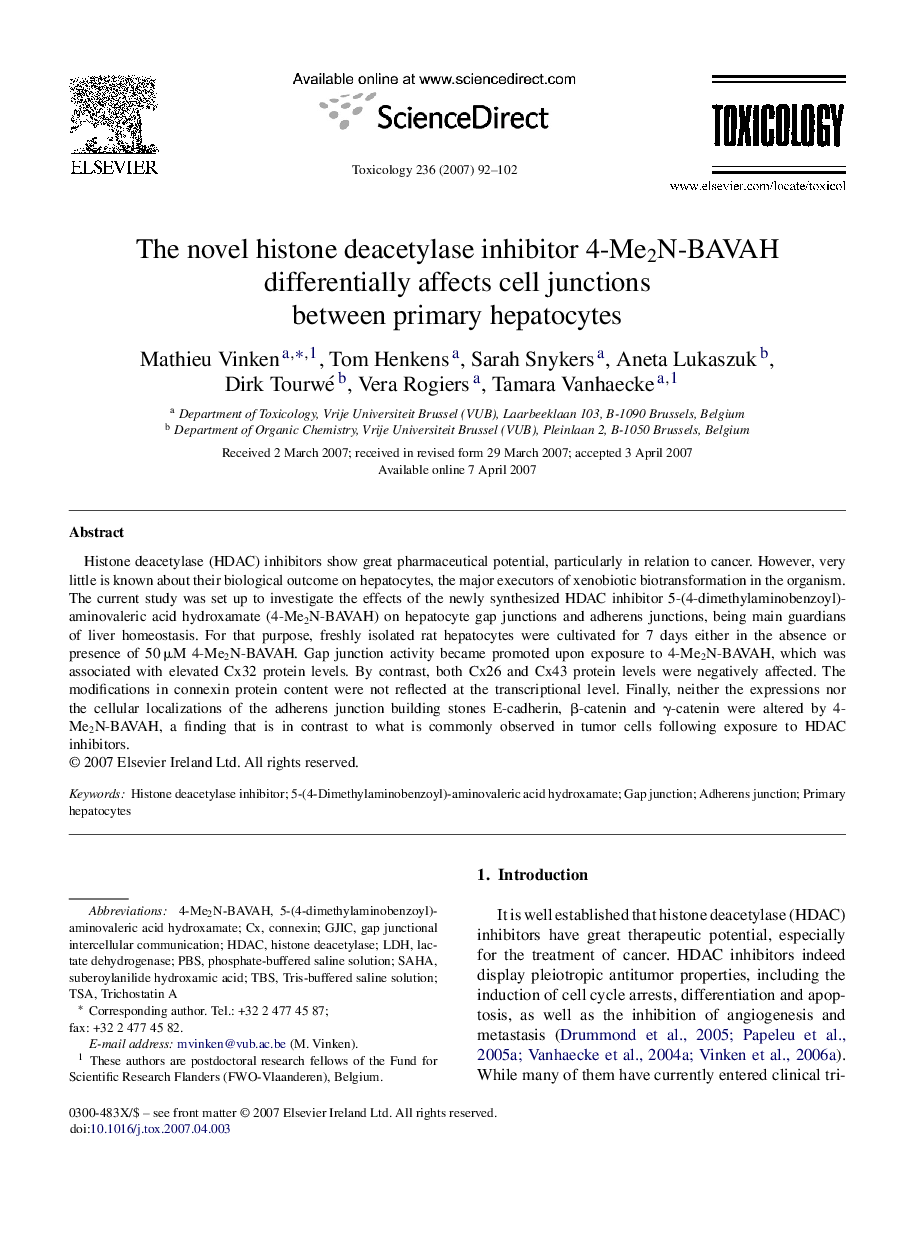| Article ID | Journal | Published Year | Pages | File Type |
|---|---|---|---|---|
| 2597463 | Toxicology | 2007 | 11 Pages |
Abstract
Histone deacetylase (HDAC) inhibitors show great pharmaceutical potential, particularly in relation to cancer. However, very little is known about their biological outcome on hepatocytes, the major executors of xenobiotic biotransformation in the organism. The current study was set up to investigate the effects of the newly synthesized HDAC inhibitor 5-(4-dimethylaminobenzoyl)-aminovaleric acid hydroxamate (4-Me2N-BAVAH) on hepatocyte gap junctions and adherens junctions, being main guardians of liver homeostasis. For that purpose, freshly isolated rat hepatocytes were cultivated for 7 days either in the absence or presence of 50 μM 4-Me2N-BAVAH. Gap junction activity became promoted upon exposure to 4-Me2N-BAVAH, which was associated with elevated Cx32 protein levels. By contrast, both Cx26 and Cx43 protein levels were negatively affected. The modifications in connexin protein content were not reflected at the transcriptional level. Finally, neither the expressions nor the cellular localizations of the adherens junction building stones E-cadherin, β-catenin and γ-catenin were altered by 4-Me2N-BAVAH, a finding that is in contrast to what is commonly observed in tumor cells following exposure to HDAC inhibitors.
Keywords
Related Topics
Life Sciences
Environmental Science
Health, Toxicology and Mutagenesis
Authors
Mathieu Vinken, Tom Henkens, Sarah Snykers, Aneta Lukaszuk, Dirk Tourwé, Vera Rogiers, Tamara Vanhaecke,
